The Alexander Patent Racket Company is probably the most successful homegrown racquet manufacturer beginning in 1926 and operating until 1961. It is largely an untold story and thankfully family members have been researching the history to produce a book for release sometime mid 2011. (What A Racket by Gus Green)
The original owners of the business were first involved with sporting goods retailing and were importing French racquets. However, they met Alfred Alexander who experimented, invented and patented the first form of dry bent timber racquet frame laminating, a process which would change wood racquet construction techniques forever. With this opportunity, the Alexander Patent Racket Company was formed and became one of the Worlds most prestigious brands.
The Pty ltd company was established in 1926 to acquire the patent and new factory facilities which had been commissioned by the existing owners Alfred Alexander and B.B. Hopwood a local sporting retailer. It was located on the Newstead estate of Launceston on Gunn Street and was powered by electricity to not have a smoke impact on nearby residences. The patent was issued on the creation of frames with more than 4 plys and from the outset racquets of 5 plys were being produced. Once formed in a dry bent manner they would take about 16 hours to dry compared to steam bent timber which required months if not years to dry as logs and then again for months after being shaped as racquets before being completed. The huge advantage with laminates is the speed at which racquets could be completed without tying up capital in inventory. The process revolutionised racquet production. As a laminated product, the company sometimes added Walnut strips in the middle of 4 English ash layers to create a a more attractive end result. Production numbers began at 140 per week with estimates of 530 per week within a few months using all the skills of mass production and modern machinery where possible and a workforce of 13. Interestingly, the retail policy was only to sell racquets that had been instore for 2 months, I presume to monitor any post production issues. At this time, Australian Made was not always considered high standard compared to the English product players were used to so no mention of location was presented on the early racquets just the Alexander name.
The first models included the: Dover, Murray, Understudy, Hunter, Cressy, Masterpiece, Mersey, Lismore and Red Seal. Naturally, other models followed, but it was the “Cressy” which remained a flag ship brand name from the start to the end. The name ‘Cressy’ is believed to have been derived from small town outside of Launceston which was the birthplace of one of Tasmania’s great champion players. When you think about it, Cressy’s longevity (37 years) as a brand certainly places it in the very rare group of long term brand names which includes the famous Dunlop Maxply model.
In 1927, a well known local Tennis player, champion and businessman from the area, Mr W.J.Sheehan, was appointed the Business Manager and it was under his guidance that the firm embarked on new directions in decorating models with more paint, decals and bindings and also opened opportunities to develop player endorsements. Very early on they signed up Australian Davis Cup and Champion J.O.Anderson and our lady Champion, Daphne Ackhurst. In the early 1930′s they company produced on the earliest known photo decal racquets featuring J.O.A.
The boom years came in the 1930′s & 40′s when Australian Champion, Jack Crawford won Wimbledon in 1933 using a Cressy “Wizard”. Also many of the Davis Cup players were using Alexander racquets as well. Jack Crawford’s racquet had a semi flat-top design reminiscent of the styles popular in the late 1880′s early 1900′s. In the early 1930′s, Sir Norman Brookes while playing tennis at his Frankston holiday house showed Sheehan his early style racquet he played with in the 1900′s. Jack Crawford, who was also there, like the way it played and so Sheehan went back to the Alexander factory and fashioned a new style of semi flat-top racquet which was given the name “Wizard” from the nickname previously given to Norman Brookes during his Wimbledon winning days. This new flat top design, inspired the entire industry in Australia with many manufacturers producing both oval and flat-top models. Diamond stringing also became fashionable again at this time.
The company produced a range of sporting goods including cricket bats and squash racquets. As a promotional gimmick they produced a 12″ tall miniature “Cressy” replica tennis racquet hand mirror. They also produced golf clubs.
In the late 1950′s the Alexander factory was wound down and sold to Spalding in Victoria. The last racquets produced were in 1961 yet the Cressy name continued for a season under the Spalding banner when it was revived for just one more year in 1966.
The final days of the Alexander company really came about as Spalding, Dunlop and Slazenger dominated the mainland retail scene and also acquired most of the high profile players to endorse their racquets.
Like many other companies Alexander’s also produced cricket bats.
This ad from 1931 shows J.O.Anderson the primary sponsored player at this time.
This full page story comes from the Launceston Examiner 14th Jan 1927 and shows the exterior
of the factory with various stages of production.
The actual patent related to the lamination of timber in a cross grain formation.
These words, kindly supplied by Gus Greene (relative) are from the patent applied for in 1921 and granted to the company in 1922:
The Alexander Invention
Date line for the Patent application dated 12th July 1921 by Alfred Alexander jun. and his younger brother Douglas Davey Alexander both of Elphin Rd Launceston the complete Specification was accepted on 7th June 1922 and advertised on 20th June 1922
No 2594/21 Class 53.2.
The Complete Specification read “ Improvements in the construction of rackets for tennis and other like games.”
We, Alfred Alexander, Junior, Technical School Instructor,and Douglas Davey Alexander, Carpenter, both of Elphin Road, Launceston, in the State of Tasmania, Commonwealth of Australia, hereby declare this invention and manner in which it is to be performed, to be fully described and ascertained in and by the following statement:-
Our invention relates to the construction of tennis and other like rackets the rims of which have usually been made of a solid piece of wood bent to the shape of the racket and secured to the handle.
According to this invention, we form the rim of the racket entirely of thin strips of wood or other flexible material that are glued or otherwise secured tightly together. The strips are long enough to extend down-wardly from the rim and to lie against the core of the handle, thus forming part thereof The handle proper is therefore much smaller than the ordinary handle and is flared outwardly at the top where it enters the rim, the joints being reinforced in the usual way.
The strips will be composed, preferably, of long grained and cross grained woods disposed alternately in the rim which, when secured together, provide a strong and satisfactory construction of racket. The gut or strings are stretched between the rim sides as at present.
The rim is made to the usual shape by bending the strips 4 upon a former or mandrill, these strips are then tightly pressed and secured together, the lower portions of the same being upon each side of the handle
This member is really the handle core and extends upwards into the rim, flaring therein to the sides where it can be secured in the usual way. The said core should also be slightly tapered and widest at the lower end. To complete the handle the ordinary covering or filling strips are paced in position, giving the required octagonal shape to the handle, which is finished at the end with the usual leather piece.
This photo shows the original factory in Launceston, Tasmania (Photos Tasmania Libarary)
As imported Ash supplies were becoming in short supply and hotly contested for by every other manufacturer (globally), Alexander’s actually attempted to develop a local industry. The Company acquired the land at Hollybank in the Underwood district in 1933, comprising a total of 170 acres with a target to plant 109,200 English trees.
One hundred 100 acres were to be English Ash, however in the first three years only fifteen acres had been cleared, ploughed and planted with 21,600 trees.
After close monitoring over a period of 10 years, it became obvious that the ash trees were failing to thrive and not growing as expected. Nothing could be done to stimulate the growth of the plantation due mainly to the issue that Ash normally grows in deep, alluvial soils in the Northern hemisphere and that is not what was at Hollybank, the soils were too acidic and moisture was also a problem.
The project was abandoned in 1950 with the sale of land to the Forestry Commission in November 1956 the year of the Olympic Games in Melbourne. The sale price was £2809.
The Alexander Lismore is one of the earliest racquets promoted around Australia c1926. The patented lamination system is clearly visible, however, a feature of the design is the much thicker shoulder areas created by the additional layer on top of the wedge. It is advertised with sister racquet the ‘Cressy’ as being used by champions Messrs. Willard, Kalms (both NSW), Les, Baker and Dr. North. While Cressy and Lismore are both townships, we will need to dig around to find out how the Lismore connection came to be.
The workmanship is quite exceptional also due to the amount of contouring and beveling that exists.
The Fleet model was introduced in the late 1920′s. This one is quite early as it has a grooved wooden handle. It has the patent stamped into the handle as was sold by Hartley’s, also stamped into the handle.
The Hot Shot model was introduced in the early 1930′s. This one is quite early as it has a grooved wooden handle.
This Blue Moon model is one of the more elaborate colour/decal treatments. The night scene with a dark tree silhouette and the moon reflecting over water is hand painted and the Blue Moon wording is a gold transfer. Given this also has a grooved wooden handle it must be late 1920′s early 1930′s. Apart from the graphics, one other very nice finishing item is the leather strip around the base of the handle. This has also been grooved to match the handle.
After Spalding took over in 1960, the Cressy name reappeared for a season and now it has gone.
If you would like to purchase the book about Alexander Rackets please advise.
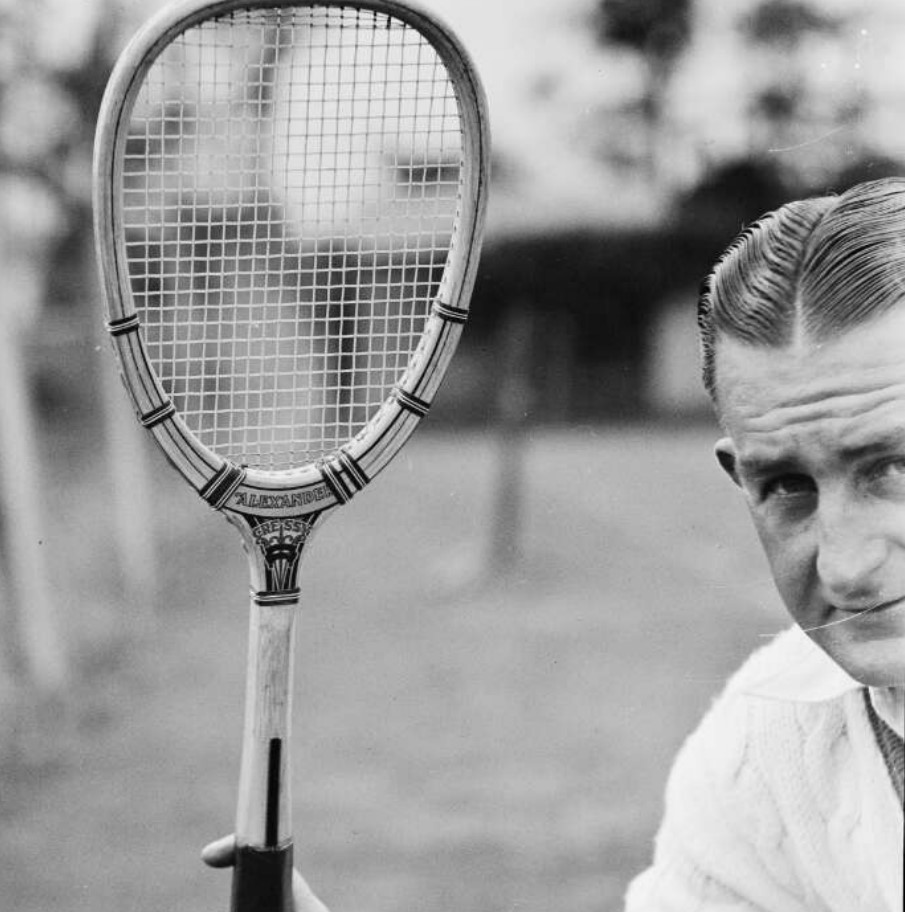
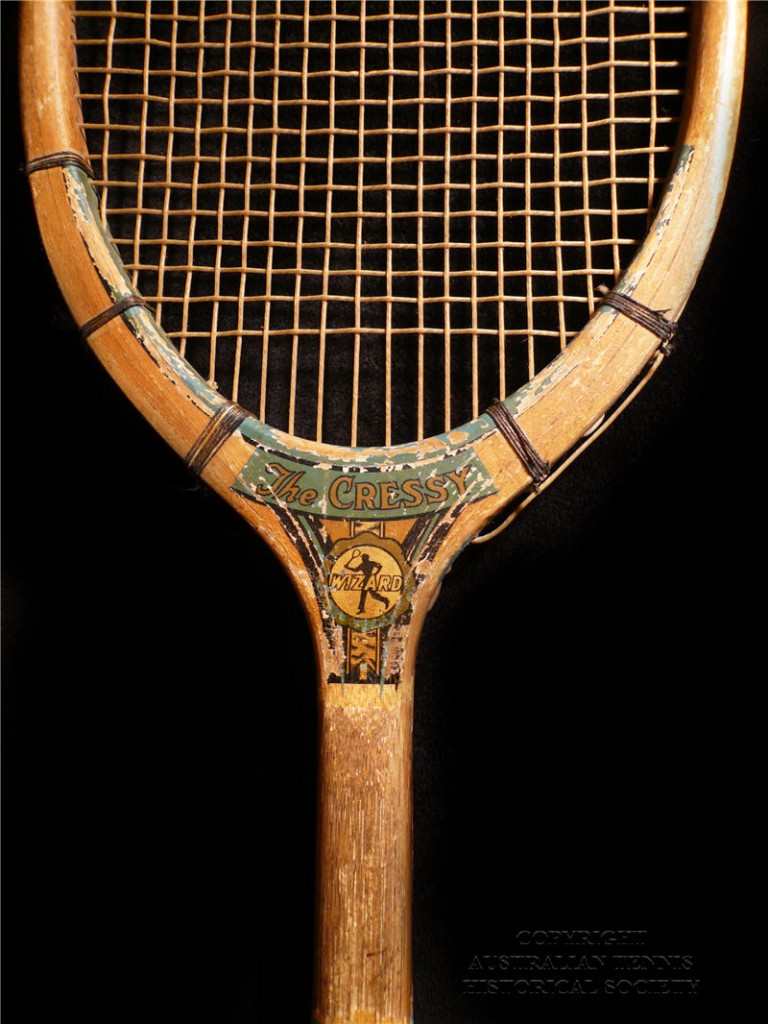
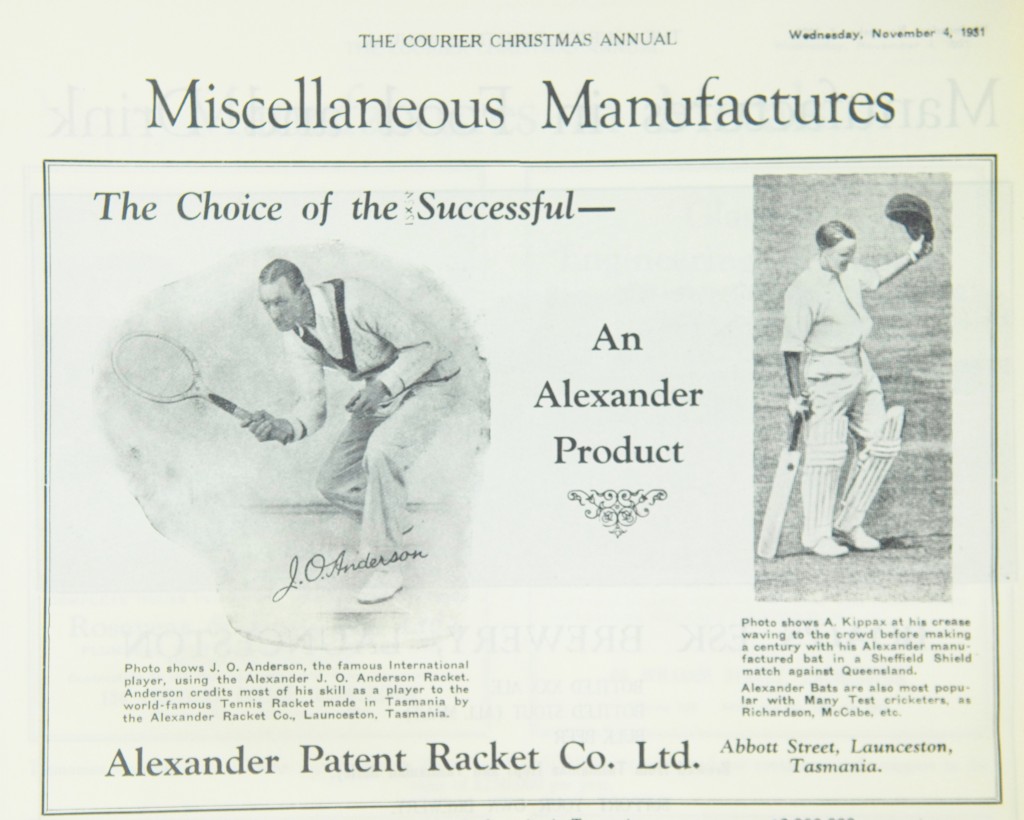
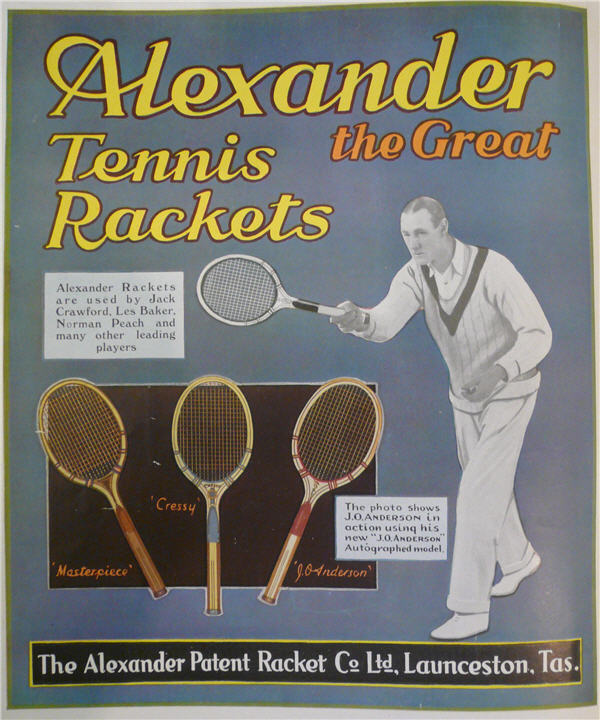
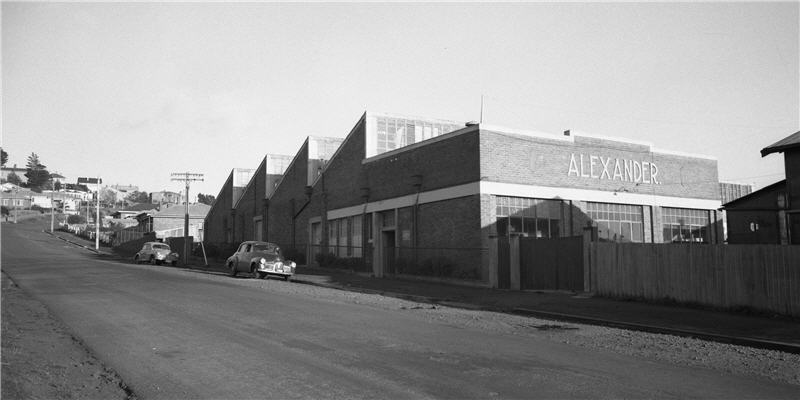
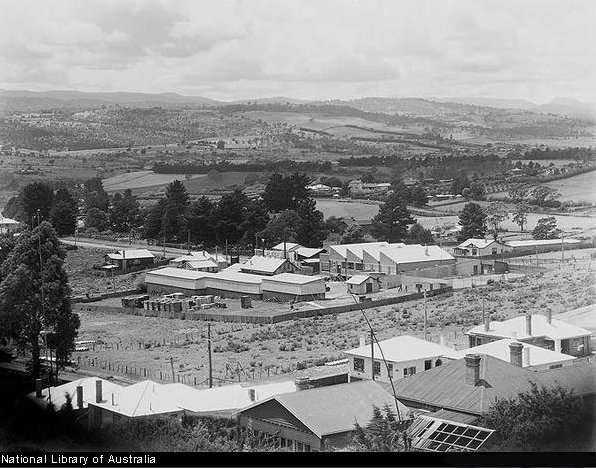
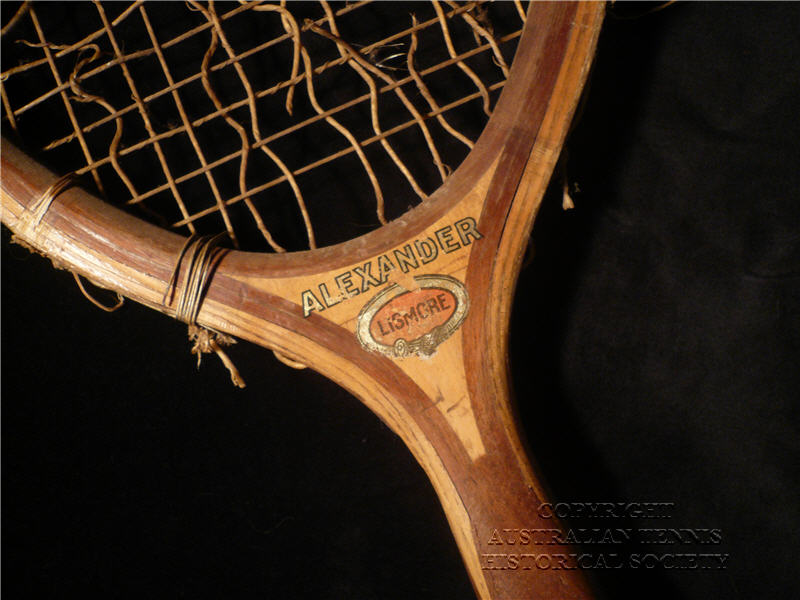
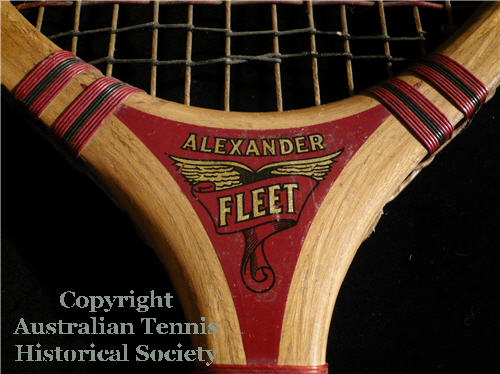
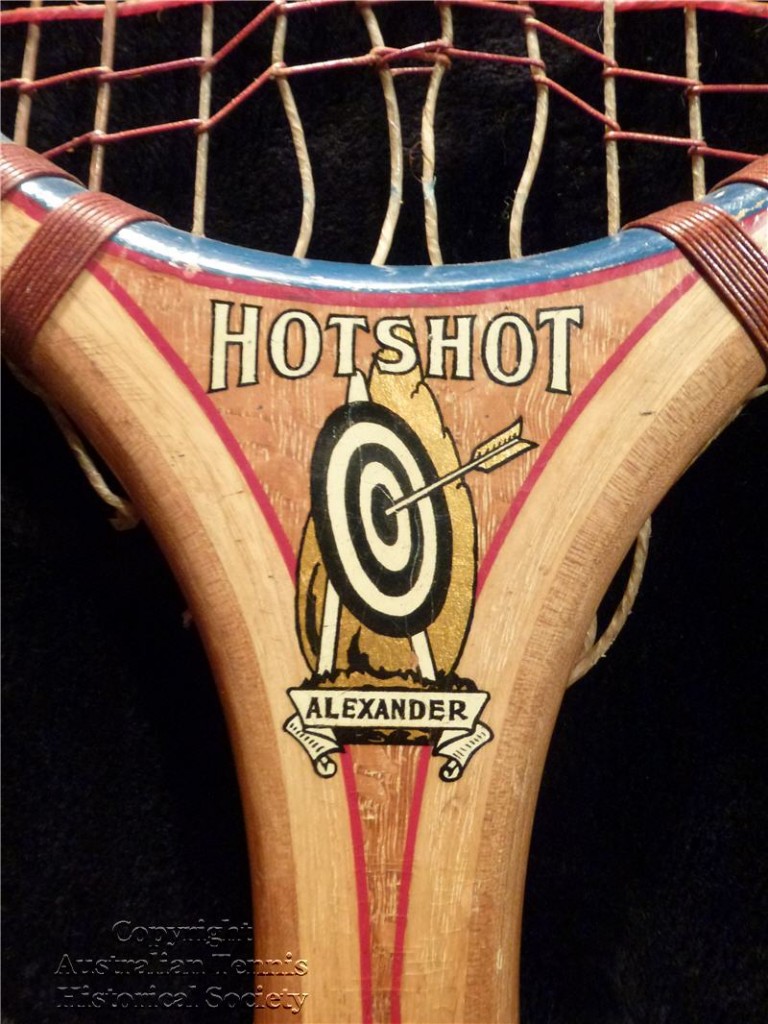
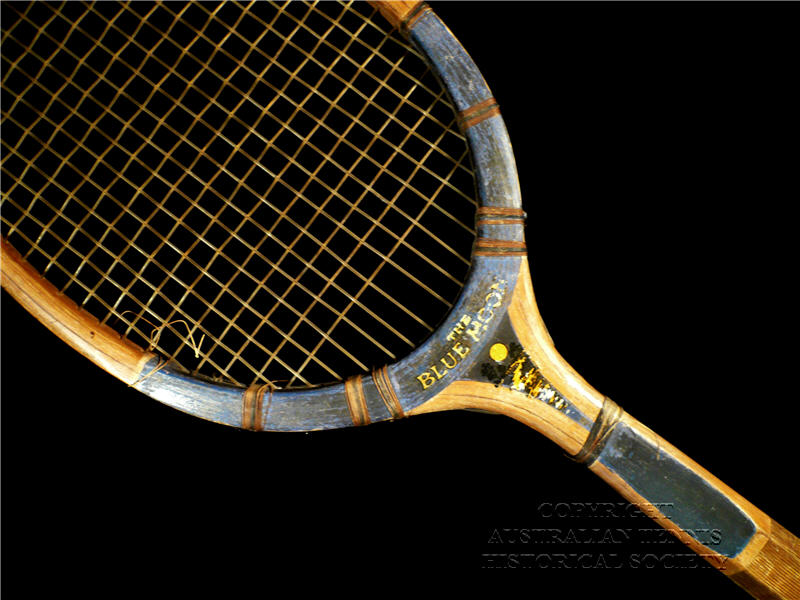
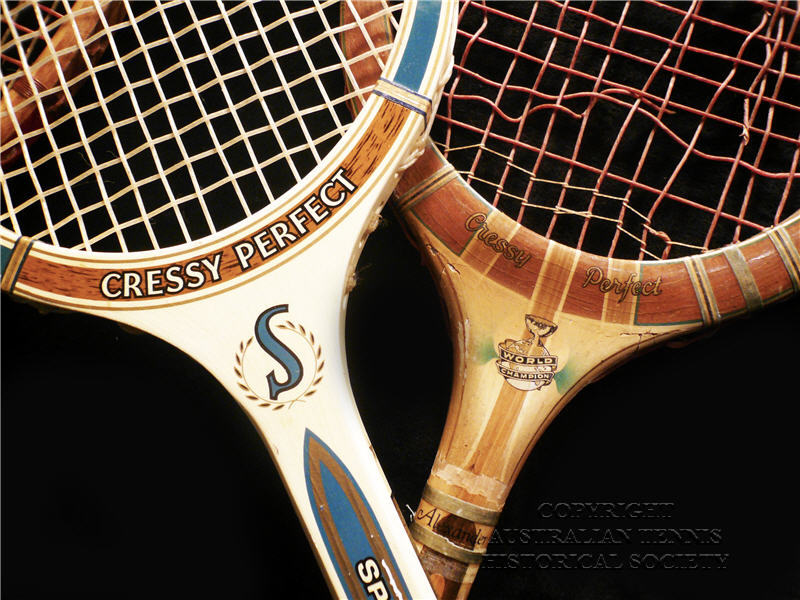

You must log in to post a comment.